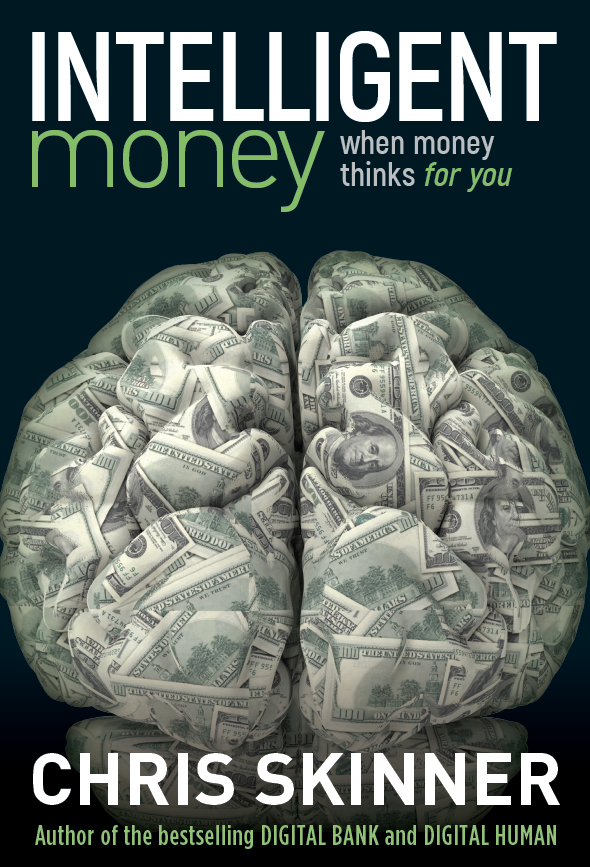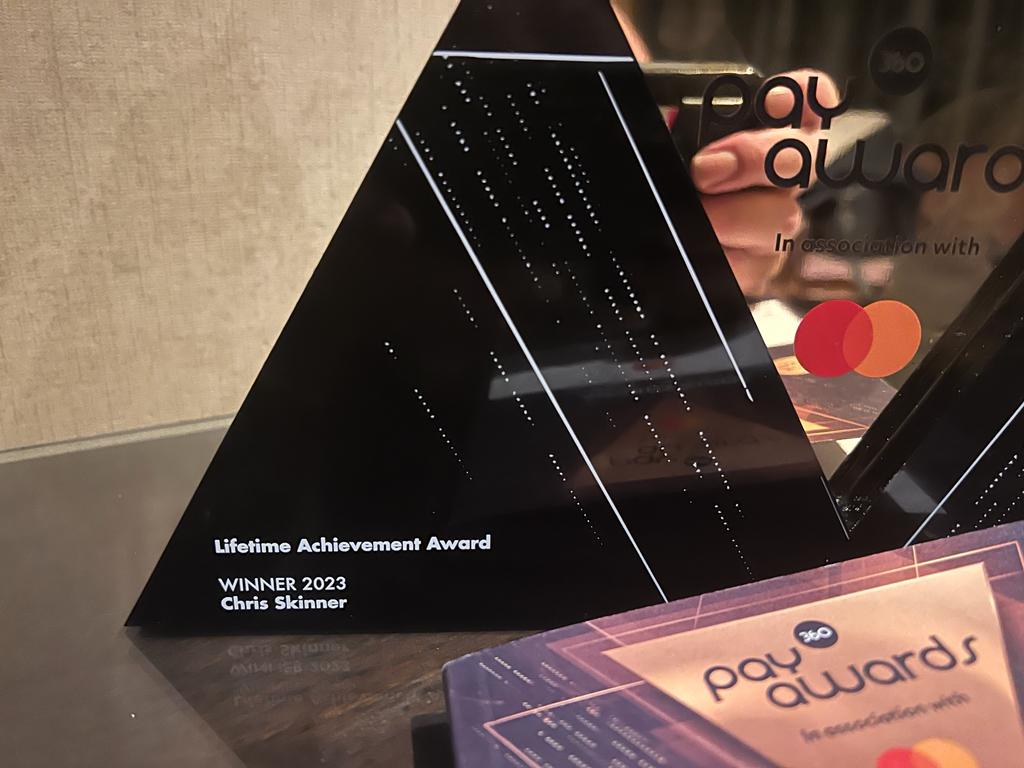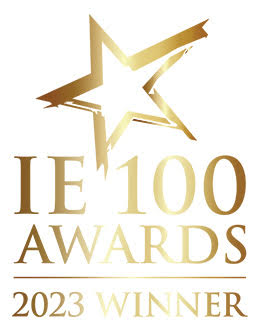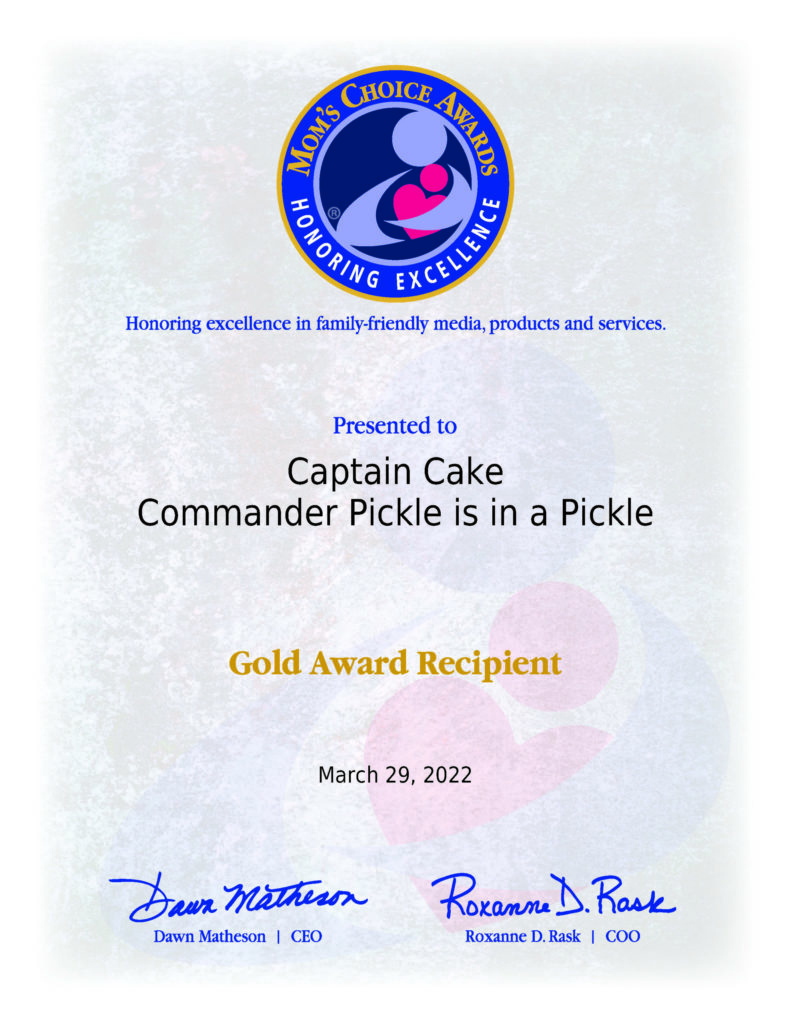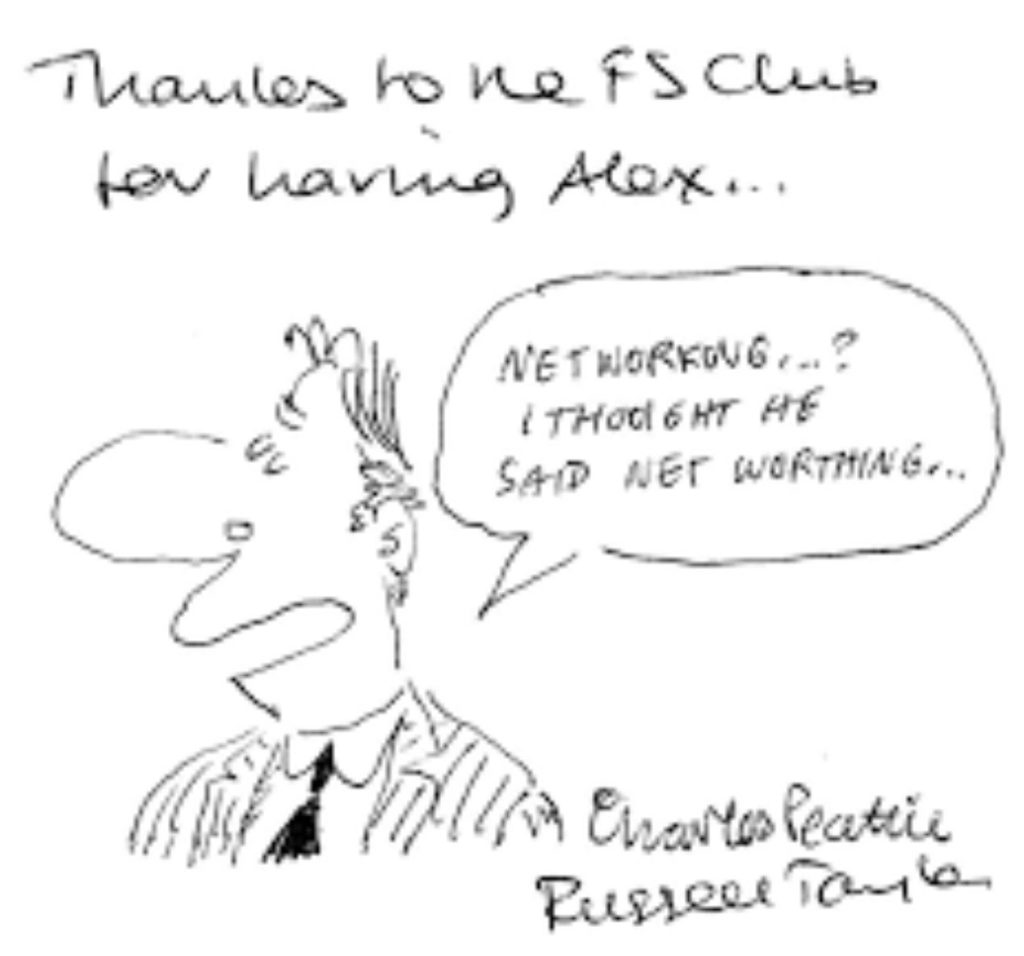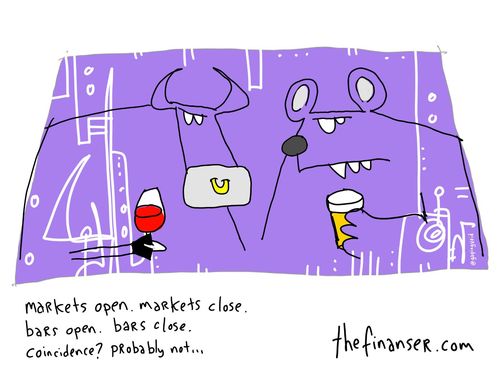I was trying to work out what would be a luxury or aspirational brand in banking.
There are plenty of banks out there, and plenty of bank brands, but are any of those brands truly aspirational?
For cars, it’s easy: Ferrari and Aston Martin, or BMW and Mercedes dependent upon your aspiration.
For watches, it’s easy: Rolex, Patek Philippe and Cartier, or TAG Heuer and Rado dependent upon your aspiration.
But for banks: are there any you truly aspire to be a customer of?
I can’t think of one.
Maybe a private bank like UBS, but their shine has been sullied of late.
Maybe Coutts ... but that's just a part of Royal Bank of Scotland.
Maybe HSBC, but it’s not a major aspirational brand but more of a functional brand, like McDonalds.
In fact, maybe all banks are more like McDonalds and Coca-Cola than Ferrari and Rolex … just functional, everywhere, everyday services, rather than prestige, aspirational and upmarket.
Which brings me to the only one I can think of – although I am ready to be corrected – which is the AMEX Centurion card, otherwise known as the “Black Card”.
The card is only available by invitation and costs around $2,500 a year.
Nevertheless, a card from AMEX is a model, not a brand.
AMEX isn’t my aspirational brand, but their card is.
So there is no aspirational financial brand out there.
Or am I wrong?
Don’t think so, as this theme is born out when looking at the top brands worldwide.
The Best Bank Brands, 2010 from the Interbrand website:
2010 Rank 2009 Rank Company Brand Value ($m) Change
24 22 American Express 13,944 -7%
29 37 JPMorgan 12,314 29%
32 32 HSBC 11,561 10%
37 38 Goldman Sachs 9,372 1%
40 36 Citi 8,887 -13%
52 57 Morgan Stanley 6,911 8%
68 NEW Santander 4,846 N/A
74 NEW Barclays 4,218 N/A
80 NEW Credit Suisse 4,010 N/A
82 94 Visa 3,998 26%
86 72 UBS 3,812 -13%
American Express
While American Express’s brand value is still far from what it was in 2008, it has weathered the financial crisis fairly well. Now more than ever, a credit card that requires you to pay it off monthly and is prudent about who it offers credit to, looks like a safe investment. Moreover, no other credit card company successfully charges and justifies an annual fee like Amex, and with new credit card regulation impending, its revenue model is much less at risk than competitors'. As Warren Buffett recently said in an interview with CNBC, “American Express is going to be around forever.” However, this hasn’t kept the brand immune from its own share of embarrassments. For example, in April, Amex signaled to the world that it was in trouble when it offered a small number of cardholders with ongoing debt issues US $300 each to pay off their account balances and close accounts – a move that was made to reduce the risk of defaults.
JPMorgan
J.P. Morgan is one of the few financial services brands that emerged from the economic crisis with its brand intact. While it has recently made impressive economic gains, like most brands in its space the firm still suffers from negative public perception, as evident from sites like JPMorgan666.blogspot.com. However, in comparison to Goldman Sachs, J.P. Morgan faces fewer challenges when regaining customer trust. Additionally, the firm continues to be viewed positively for its internal efforts. For example, it was just voted the number one ideal employer in financial services for undergraduates by BusinessWeek, and it was ranked at the top of Bloomberg Markets’ ranking of investment banks in April. This year, J.P. Morgan’s effort to go mobile with its launch of MorganDirect on iPhone, as well as its investments in corporate citizenship practices like a student-led project in Rwanda, were notable.
HSBC
Despite the damage inflicted by the financial crisis on all financial services brands, HSBC remains the most differentiated in the marketplace and, like J.P. Morgan, emerged with its brand intact. Yet while it still aims to be the leader in its sector, customers are watching it closely due to its involvement in the subprime mortgage scandal, and even more recently, the data theft of its customers’ personal account information. Despite being well known due to a heavy media presence, HSBC’s lack of retail presence in non-core markets has consistently hurt the brand. It actively seeks expansion opportunities, particularly as brands like Santander extend their reach. This year, HSBC has continued to explore opportunities in emerging markets, though the economic results in Asia were less rosy than anticipated.
Goldman Sachs
For decades, Goldman Sachs was the firm that Wall Street envied. It bred some of the smartest investment bankers and proprietary traders and housed large private equity and hedge funds. Today, however, its aggressive, titanic leadership image has become a detriment. While the bank may appear to have been humbled with the rest of Wall Street in 2008, after a government bailout, strong earnings and high bonuses have led to a great deal of debate around whether Goldman Sachs is working in the best interest of its clients or itself. Despite a recent settlement with the SEC regarding mortgage securities fraud, reports of the company’s currency swap deal that may have led to Greece’s collapse only fuelled the fire. Goldman currently faces a dichotomy: On the one hand, its economic results appear to be more stable than its competitors (although it faces a weaker quarter). On the other, it faces an angry public who will only continue to lash out until Goldman Sachs begins to demonstrate that it is making sincere efforts to better align its ethics with its brand.
Citi
Citi was one of the brands most impacted by the economic crisis and there is continued uncertainty around the long-term direction of the bank. As a result, it is working at reinventing itself by admitting its errors, owning up to problems, collecting customer feedback on a blog dedicated to improving the brand (the new Citi blog) and vowing to change and recover. But Citi doesn’t appear to be out of the woods quite yet; it recently announced that it lost around US $1.6 billion in the fourth quarter of 2009, mainly from trying to pay back the federal government, and it has a total loss of US $7.6 billion for the year. Its attempts to be honest and restructure are a good start, but the brand needs to go a long way to regain trust.
Morgan Stanley
Morgan Stanley was severely damaged by the financial crisis, but the firm seems to have made the appropriate changes in its strategy and management and appears to be on the right path to rebuilding its reputation as one of the world’s largest and most respected financial services companies. This year, it aggressively completed a merger with Smith Barney, to become the largest brokerage force in the world. While this was a big move, Morgan Stanley has remained focused primarily on internal operations – from corporate citizenship to pursuing its signature expansion and innovation. Meanwhile, it has yet to clarify the merger’s impact externally. A focus on unifying the company as well as a stronger attempt to differentiate itself through interpersonal relationship with clients and financial advisors will be crucial in the years to come.
Santander
The stable, well-managed Spanish bank Santander, which saw little impact from the financial crisis due to its conservative banking style, is a new entrant on this year’s rankings, due to an increased international presence. Since 2008, it has focused on bolstering its presence through acquisitions including Alliance & Leicester in the U.K, Sovereign in North America and SEB in Germany. While the acquisitions put Santander in an enviable position, its ambitious and quick expansion does come with risks: for example, inconsistencies in its visual, verbal identity and experience. However, moves to quickly and seamlessly rebrand its newly acquired U.K. brands as Santander show that the brand is aware of the problem. As the largest financial franchise in the Latin American region, it continues to hold a position of leadership in the key fast-developing markets of Brazil, Mexico, Chile and Argentina, which bodes well for its future.
Barclays
Barclays’s aggressive positioning during the downturn, U.S. expansion and a concerted effort to design and implement a global, group brand architecture strategy have boosted the brand and made it a significant international player. This year Barclays focused on a number of brandbuilding endeavors, including a new and improved design for its website, which was well received, particularly for Barclays’s effort to provide tangible ways for clients to increase control over their finances. Its iPhone game, one of the most popular free, branded games in the history of the iTunes App Store, was another breakthrough as well. Barclays was also commended for its sustainability efforts: Barclays Spaces for Sports was named Corporate Social Responsibility Initiative of the Year at the Peace and Sport Awards in Monaco. Growth looks particularly good in developing countries, where Barclaycard is making headway into the world of payments as credit becomes more popular. Still, Barclays’s efforts to become a top global bank have come with risks – most notably in the increased spend it has put into its investment banking business. It may or may not pay off, depending on when the capital markets recover.
Credit Suisse
New entrant Credit Suisse is among the winners to emerge from the financial crisis. It cut risk early and did not have to take any government money. As a result, the firm was able to embrace a client-focused strategy that has earned Credit Suisse accolades from its clients and the press. In both investment banking and private banking, it has been able to capitalize on the difficulties of its competitors and deliver the highest returns on capital in the industry. The focus on keeping a low profile, stability and consistency has suited the firm well. The key question going forward is whether Credit Suisse can maintain its course and continue to leverage its strengths as competitors regain momentum.
Visa
This year Visa continues to prosper due to its unusual position. While most major banks risk foreclosure, Visa’s business model is based on its support of plastic cards and network-based services, so it doesn’t have the same risks as normal banks. Additionally, as we move toward a paperless and digital society, these cards seem more appealing. Visa’s commitment to security has also become a real differentiator as the risks of online shopping and the general temperature of our culture have made safety and trust more of a concern than in the past. This year, Visa showed foresight by addressing the public’s growing concerns regarding managing personal credit through financial literacy materials with the aim of educating consumers. It has also emphasized transparency on a new blog, which shows how Visa works with its partners to instill key financial skills and encourage responsible spending across the globe. Its presence at international event like the Olympics 2010 Winter Games as well as the FIFA World Cup also served it well this year, elevating its visibility.
UBS
UBS has been at the heart of the financial tsunami and emerges damaged from the economic crisis with its reputation far below levels several years ago. While UBS is planning to build on its long heritage, and the company is clear about its objective of regaining trust, there is no sense that internal efforts are impacting customers. This is particularly true in the U.S. and Europe, as all of the bank’s efforts are constantly being undermined by scandals like its damaging U.S. tax evasion case. Despite this, confidence in the bank continues to remain high in Asia, where UBS plans to expand operations.
Chris M Skinner
Chris Skinner is best known as an independent commentator on the financial markets through his blog, TheFinanser.com, as author of the bestselling book Digital Bank, and Chair of the European networking forum the Financial Services Club. He has been voted one of the most influential people in banking by The Financial Brand (as well as one of the best blogs), a FinTech Titan (Next Bank), one of the Fintech Leaders you need to follow (City AM, Deluxe and Jax Finance), as well as one of the Top 40 most influential people in financial technology by the Wall Street Journal's Financial News. To learn more click here...






